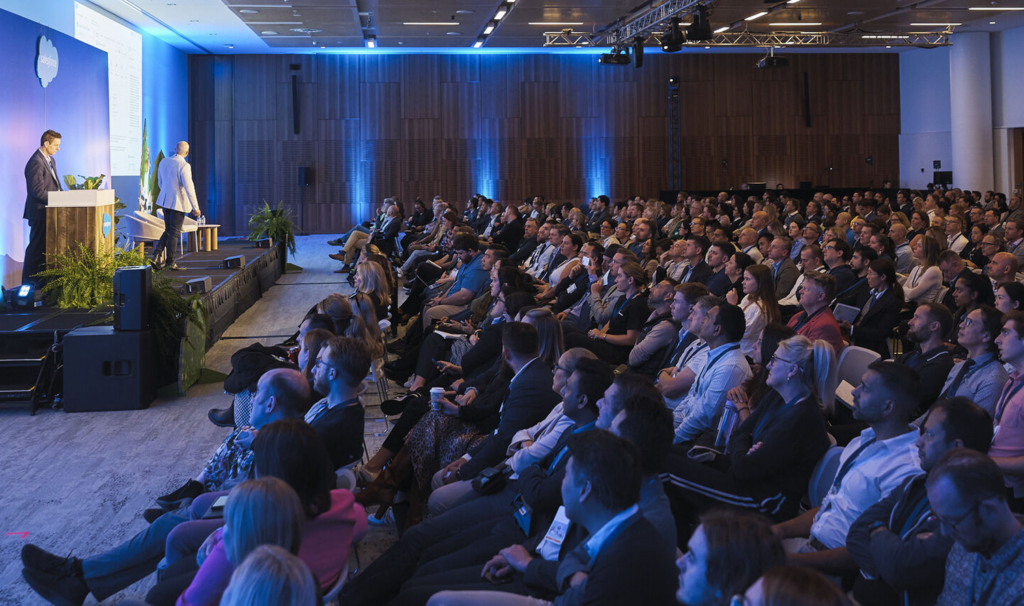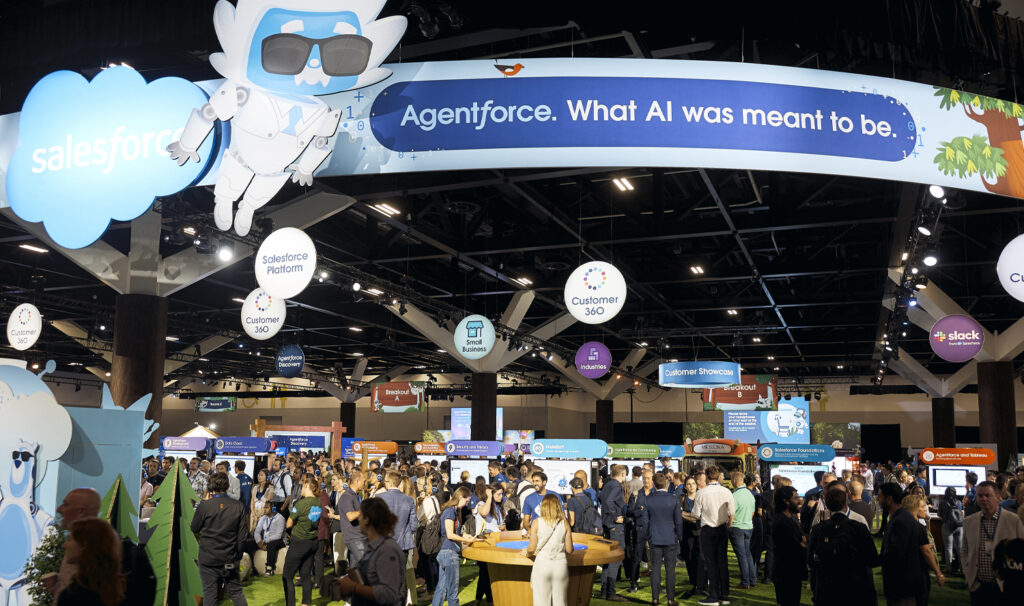The 39th annual Tertiary ICT Conference took place in Auckland from 29–31 August. Simplus was there to share knowledge, and hear insights from the industry. Here’s what we saw.
The theme of this year’s Tertiary ICT Conference was Educate, Transform, Connect, and we were there alongside our colleagues from Salesforce for three days of learning and knowledge sharing.
Across the three days, the message was clear – the future of education will require institutions to understand how technology has the power to change the student experience, and apply the right solutions. As Professor Michael Rosemann pointed out in his keynote address, the education sector can sometimes be conservative in its approach to technology – but there are many benefits that technology can bring to institutions of all sizes.
Creating a future where learners can thrive
John Goulter, Project Lead – Digital and Data Strategy at the New Zealand Ministry of Education, gave a keynote presentation on the ministry’s new digital and data strategy.
The 10-year strategy aims to guide the direction of New Zealand government education agencies towards a future where data and digital tools will become ever more vital. The work was initiated in 2021 to align the Ministry with the Government’s overall digital strategy, and create an approach to promoting digital in New Zealand education.
Goulter outlined the vision for the strategy:
- Learners and educators thrive – live, learn and work – in the digital world. Education needs to equip people for the digital world in its totality.
- People are data and digital capable, contributing to personal, community and national growth.
- Learning, teaching, assessment and research should make best use of data and digital tools.
As Goulter said, while the New Zealand Ministry of Education understands the central position that digital learning will hold in the future, there are still challenges.
Many educational institutions are concerned about the twin challenges of interoperability and future-proofing – finding technology solutions that allow data to be shared securely, that will also repay investment with long-term reliability.
Today’s digital culture means that expectations are high among digital-native students. And while digital technology has the potential to unlock insights not only for the education provider, but also the learners, teachers and whānau, the question remains – how can that be achieved?
Developing responsibly – the importance of architectural guardrails
Paul Fallon, Principal Architect at the New Zealand Ministry of Social Development, presented on the topic of architecture guardrails – sets of best practices and standards that allow developers to safely create innovative solutions while remaining in compliance with regulations. Fallon describes guardrails as providing “boundaries within which you can explore and play safely.”
Fallon gave the example of launching a website. Every stakeholder wants development to run smoothly, but more often than not, we see a process of looping sets of approvals, reviews, and repetition as the design moves between the architect and governance.
By following a process that incorporates architectural guardrails, he argues, developers can avoid unnecessary repetition and iteration. The guardrails allow developers to work and innovate within an agreed structure, limiting the back-and-forth of submissions, corrections and revisions at each stage of a website’s development.
Fallon finished by offering a top-level description of how you can set up architectural guardrails on your own projects:
- Create a formal architecture review board
- Ensure you make provisions in the terms of reference for guardrails
- Create an architecture decision log
- Ensure this is indexed and searchable
- Create a broad stewardship group for guardrails
- Have representation from all areas that impose governance on projects
- Create a guardrails library
- Collect together your policies, standards, principles, guidance and patterns
- Build a backlog
- Prioritise the creation of guardrails based on need and repeatability.
- Require that first-in-class projects generate guardrails.
- Implement metrics that define success, and track them
- Stop or iterate any ideas that are not working
A tale of transformation from University of Canterbury
Iain MacPherson, Director Student Journey and Teaching Experience, and Melanie Wall, Product Manager Student Management, from the University of Canterbury presented on the institution’s journey building a lifelong learner ecosystem.
Due to spending being redirected following the 2011 Christchurch earthquake, the university found itself behind the curve when it came to digital experience and products. Because of this, the university adopted a policy of ‘digital leapfrogging’ – as opposed to evolutionary change – which would allow them to regain lost ground.
The university set out with the intention of developing its own Student Management System (SMS) to replace the legacy SMS that was at high risk of being outdated and out of support. It quickly realised, however, that building a monolithic like-for-like replacement was not the correct approach – instead, a learner-focused ecosystem of solutions was required.
The vision was for a solution that is experience-led, catering for life-long learners. And the university wanted to avoid a solution that would date quickly, silo data, and provide an unsatisfying user experience.
To achieve its vision, the university needed to do three things:
- Understand what needs be done
- Define the right architecture
- Build the right team
MacPherson and his team knew the right architecture was vital for the overall student management system. With a diverse range of functions, the need for a platform that could integrate with third-party applications was paramount. Creating a data layer that speaks a common language means that each subsequent step is much easier.
And for users, a simple interaction layer was vital – at its core, the transformation was driven by a human-centred design system where user experience was at the front of everyone’s mind.
Overall, the university has been on an extraordinary journey, and it’s not finished yet.
Data and digital for your institution
Simplus has a long history of working with higher education institutions to develop digital solutions. Using the unmatched capability of Salesforce CRM, we will work with you to scope, design, build and maintain a digital platform that will enable you to drive student success across the lifecycle from prospect to alumni.





